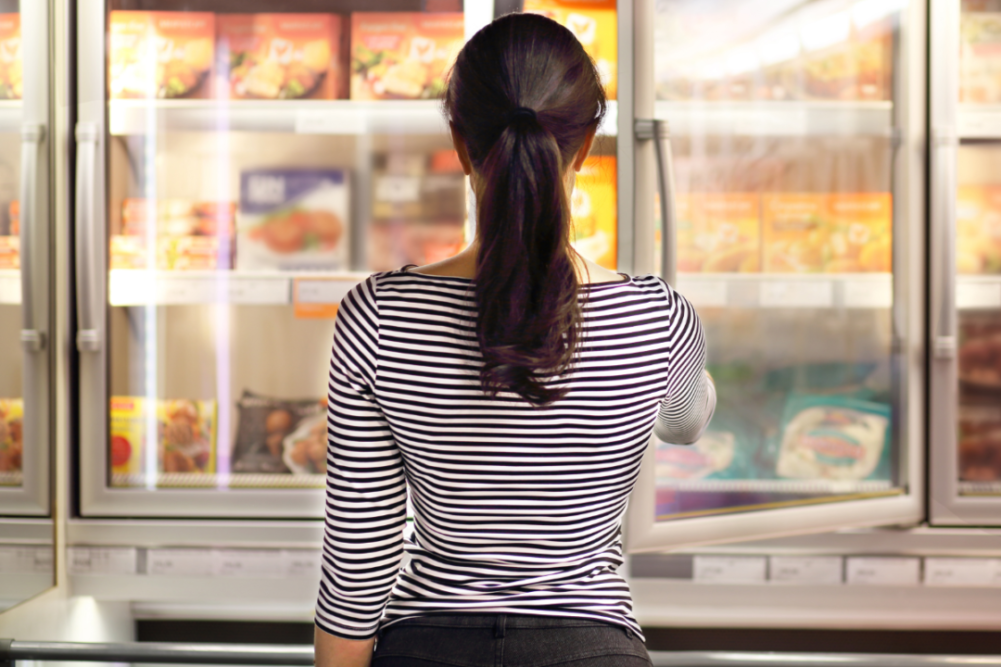VEVEY, SWITZERLAND — From what people eat to how and where they purchase foods, experts at Nestle USA identified five trends set to shape the food and beverage industry in the year ahead.
Grocery and e-commerce will continue to go head-to-head for consumers’ dollars, said Alicia Enciso, chief marketing officer at Nestle USA. Shopping has become increasingly multichannel during the pandemic, and channel choice will be more fluid in 2022 as shoppers keep up their online spending while also returning to in-person grocery stores, she said.
Nestle last month unveiled plans to grow online sales from 13% of revenues in 2020 to 25% in 2025. Achieving that goal will require greater investment in digital marketing initiatives, including what the company calls “shoppable content.”
“That’s where you have an ad that the consumer can immediately click on and then select their retailer of choice to order from,” Ms. Enciso said. “This leads to another trend we’re seeing, which is consumers being really interested in and looking for inspiration across food and beverage.”
Home bakers searching for inspiration found a new tool earlier this year thanks to an innovative platform from Nestle. Using artificial intelligence, the company debuted the “cookie coach,” a lifelike virtual avatar that answers questions about its Toll House chocolate chip cookie recipe.
“There were tons of questions around assistance in terms of baking, so we created this AI assistant,” Ms. Enciso said. “We’re also working to make sure packaging is fit for purpose when it ships directly to the consumer, so we’re taking a very end-to-end approach to the whole omnichannel transformation.”
New work routines
With many Americans working from home and more employers embracing hybrid work models, breakfast and lunch are becoming important innovation battlegrounds. A recent report from Acosta found 47% of adults ate breakfast and lunch at home every day since the pandemic began, compared to 37% for breakfast and 26% for lunch pre-COVID.
As a result, consumers are looking for greater at-home breakfast and lunch options, Ms. Enciso said. She pointed to frozen sous-vide egg bites as an example. Sold under the Life Cuisine brand, which offers heat-and-eat meal solutions complementing a variety of eating-well approaches, the egg bites tap into demand for more protein and vegetables.
“We’re also seeing the bowl format gaining significant traction in both breakfast and lunch,” Ms. Enciso said. “We’re looking at breakfast and lunch innovation in a multi-prong way, leveraging all of our different brands as well as multiple product formats.”
Remote work also is shaking up coffee routines. Many consumers became their own barista during the pandemic, with millennials reporting higher satisfaction when it comes to their coffee routine when working from home, according to Nestle. The company is tapping into the trend by creating more digital content to help consumers create their ideal at-home coffee experience.
“We really upped the game on our coffee content for our Starbucks brand,” Ms. Enciso said. “We doubled the amount of recipes to help inspire our consumers. People are becoming more comfortable with and very capable at making coffee from home. It is an important trend, both in terms of driving better content and driving new products.”
Snacking surge
More than 35% of consumers report snacking more often now than one year ago, with snacking occasions accounting for 48% of all food and beverage occasions, according to data from The Hartman Group. Appealing to snackers across generations is a key focus for Nestle in 2022.
“We’re seeing this convergence in terms of people snacking more throughout the day while also being interested in additional trends, like health and wellness,” Ms. Enciso said.
Nestle USA in October introduced Rallies Nut Butter Bombs. The refrigerated snack comes in brownie almond butter and salted cashew butter varieties, with a raspberry peanut butter variety set to launch next year. The Nut Butter Bombs contain approximately half the added sugar as the leading nut butter chocolate candy, according to the company.
“The nut butter bombs deliver an amazing taste, and at the same time, the permissibility that you expect from a healthier offering,” Ms. Enciso said. “We're also seeing more plant-based snacks. For example, we’re launching our Life Cuisine Cauliflower Bites, which are sort of like chicken wings that are made out of cauliflower.”
Plant-based preferences
When it comes to younger consumers’ growing desire for plant-based diets, dairy-free coffee creamer is one area of focus. This spring saw the introduction of oat milk creamers under the Coffee Mate brand, which followed the launch of non-dairy Starbucks-branded refrigerated creamers last year.
“We started with almond and cashew, but that is continuing to evolve into new plants,” Ms. Enciso said. “Plant-based is here to stay because of Gen Z. We’re just starting to see their impact, and they’ll definitely drive sustainability in the coming years.”
Plant-based chicken is another area of focus for 2022. Ms. Enciso pointed to Mindful Chik’n strips, which launched in 2019 under the Sweet Earth Foods brands. The company earlier this year expanded its meat-free chicken offerings with a shredded version of Mindful Chik’n in seasoned, chipotle and Korean BBQ varieties.
“Here in the United States, chicken is much bigger than beef,” Ms. Enciso said. “We’ve heard so much about the different burger patties, but the transformation of chicken will be much larger because Americans love chicken even more.”

